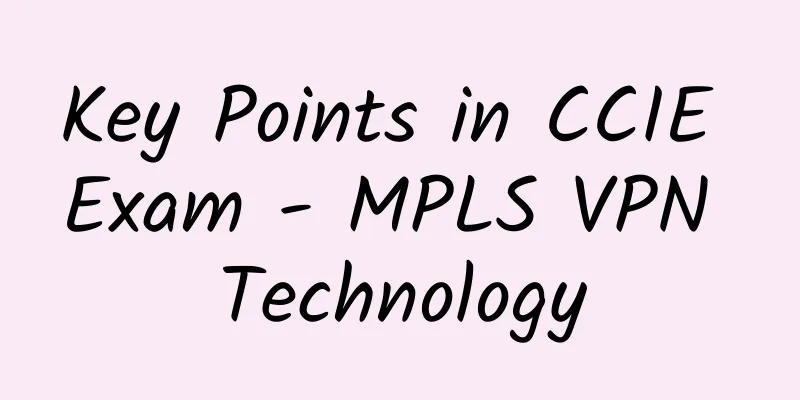Key Points in CCIE Exam - MPLS VPN Technology

|
MPLS VPN technology is a key point in the CCIE exam. Does it have practical uses in real networks? Can these technologies be implemented in practice? Can MPLS VPN technology improve your job search? Routing comes first, then data 1. Briefly explain what MPLS VPN is MPLS VPN technology has been deployed since 2002, but after decades of development, a set of methods have been formed to implement and maintain this technology. MPLS VPN can actually be divided into MPLS and VPN technologies. MPLS VPN refers to multi-protocol label switching technology. VPN is isolated at the routing level. MPLS VPN can be understood as multi-protocol label switching technology isolated by routing. 2. What effects can MPLS VPN achieve? On the premise of a set of physical hardware, the routing tables are separated according to different services, and the routing tables of each business network run independently. (1) MPLS VPN Design
(2) Address planning
The three types of addresses should not be repeated because they have different purposes. Knowledge point: Understand the differences between physical address, loopback address and business address;
(3) IGP routing planning Protocol Design Topology Network point: The network point design uses multi-area segmentation to reduce LSA flooding; Cities:
Knowledge point: OSPF design needs to take into account the SPF algorithm calculation problem caused by LSA flood prevention
(4) BGP Planning In BGP VPNV4 planning, we need to determine the roles, PE as the egress of traffic, P device as part of the pipeline, and RR device route reflection to neighbors;
Knowledge point: MPLS VPN planning, we need to know the role of each role
Routing in MPLS VPN goes through several processes:
3. Understanding MPLS VPN (1) Routing and data We need to discuss MPLS VPN from two aspects, the routing level and the data level; the routing tag is divided into rd and rt values, and the data level is divided into inner and outer labels; (2) How to understand rd and rt To split the routing table into several parts for transmission, first mark the corresponding routing table to distinguish the routing table;
(3) How to understand double-layer labels Labels are divided into inner and outer labels
|
<<: SD-WAN is about to dominate edge networks
>>: Although there are nearly 100 5G terminals, they are not even the tip of the iceberg.
Recommend
DogYun customized classic cloud, Hong Kong VPS annual payment 168 yuan
DogYun is a Chinese hosting company founded in 20...
5G network construction: NSA or SA first?
Different from the era from 3G to 4G, the evoluti...
5G is here. Join hands with the industry to welcome 5G large-scale commercial use
[Shenzhen, China, April 17, 2019] "5G is dev...
From 1G to 5G and then to 6G, 30 years of mobile communication technology
Since the 1980s, mobile communications have seen ...
How long will it take for 5G to be fully commercialized? Why?
Recently, a netizen asked, how long will it take ...
23 pictures to explain routing protocol: the core technology of computer network
[[421406]] Let me get straight to the point and f...
What are the differences between HTTP and HTTPS besides security?
HTTP and HTTPS are two common network protocols, ...
The TCP three-way handshake is well known, but what about accidental packet loss? What about intentional non-ACK response?
1. Preface When we talk about the TCP protocol, t...
Huawei's Xu Wenwei: Leading with innovation and driving global progress
[[262734]] On April 16, at the 16th Global Analys...
The Internet of Things is not new, but why is it important?
The Internet of Things (IoT) is a term that is be...
If you don’t understand, just ask, how can you make your home internet speed faster?
In the past few years, innovative technologies su...
The current status and future prospects of 5G in the IoT market
The global 5G in IoT market is experiencing signi...
In 6 years, the staff has gone from novices to experts. The informatization of the China National Museum of Ethnic Minorities is so trendy!
[51CTO.com original article] Whenever people ment...
How practical is 5G for ordinary people?
5G has three main advantages over 4G: high speed,...
IPv6 is coming, what should we do with SDN?
IPv6 has been called for so many years, and final...









